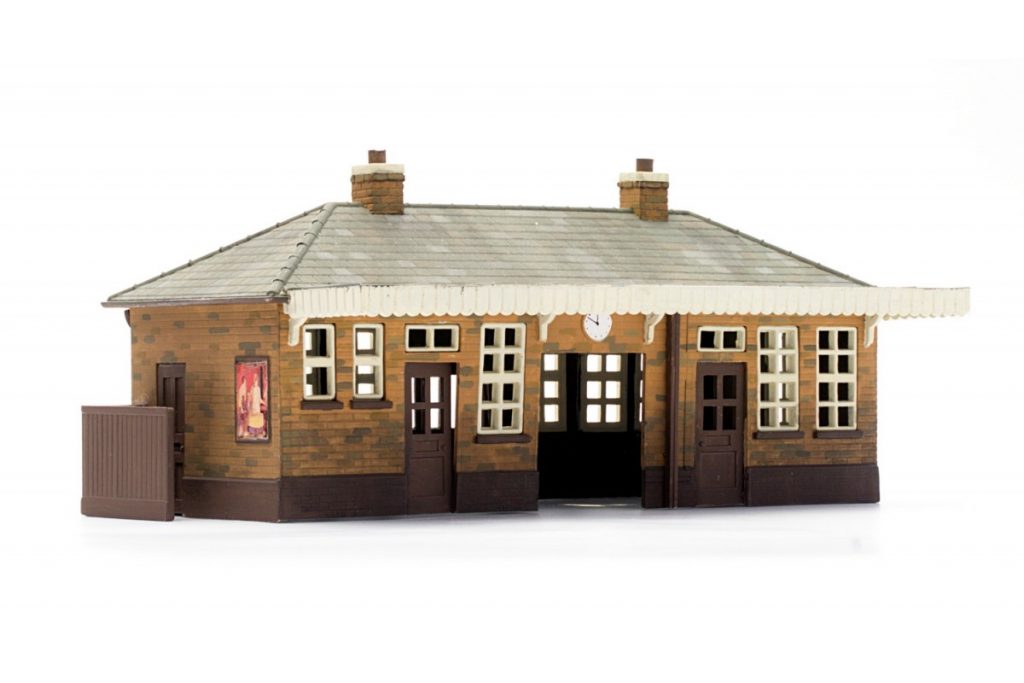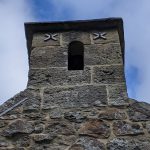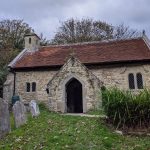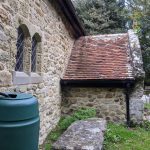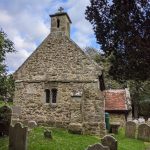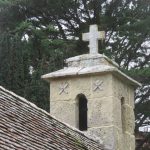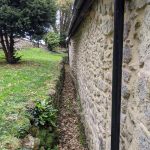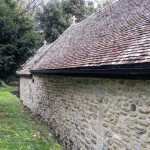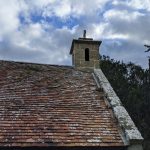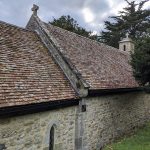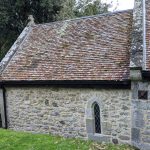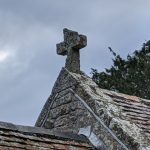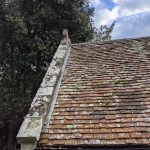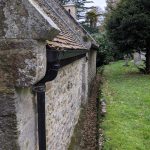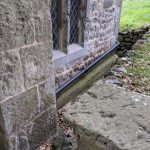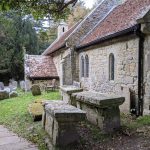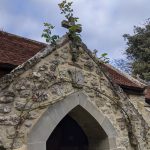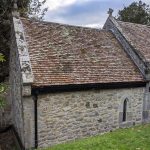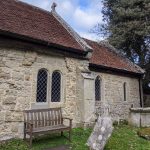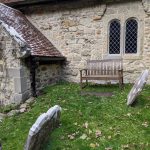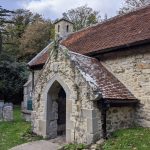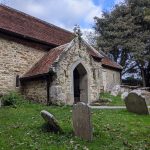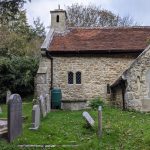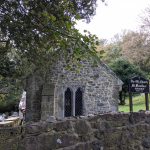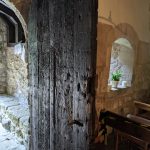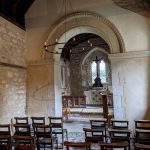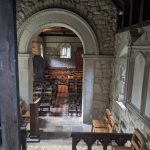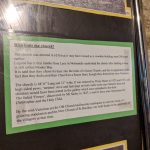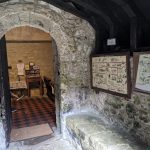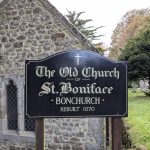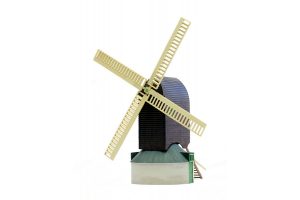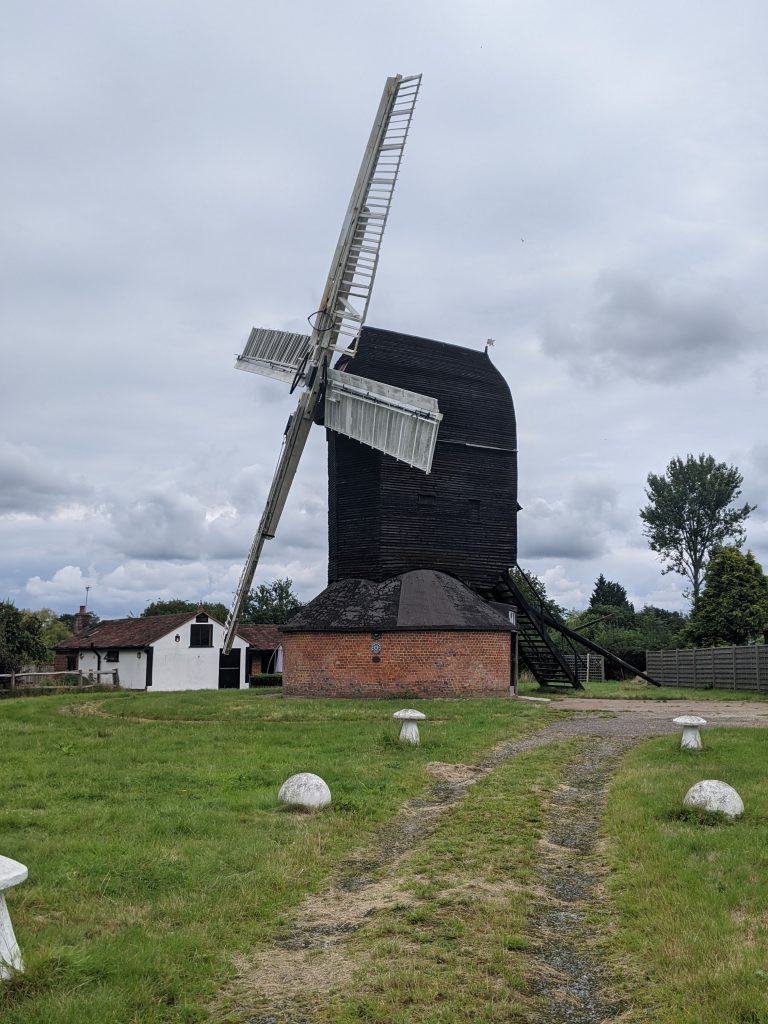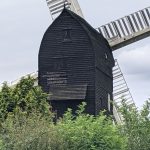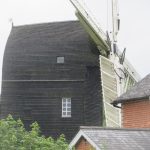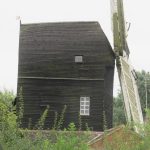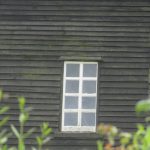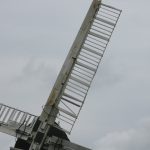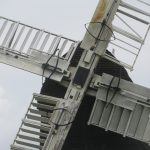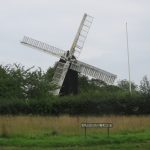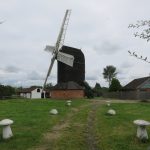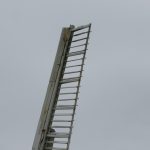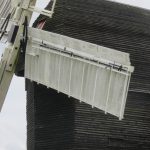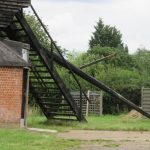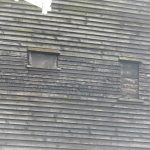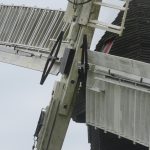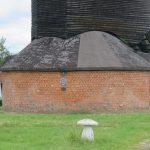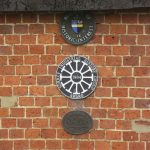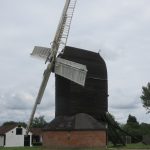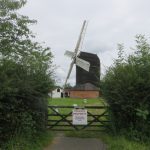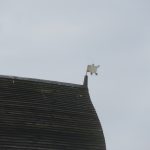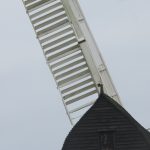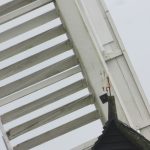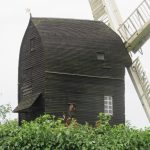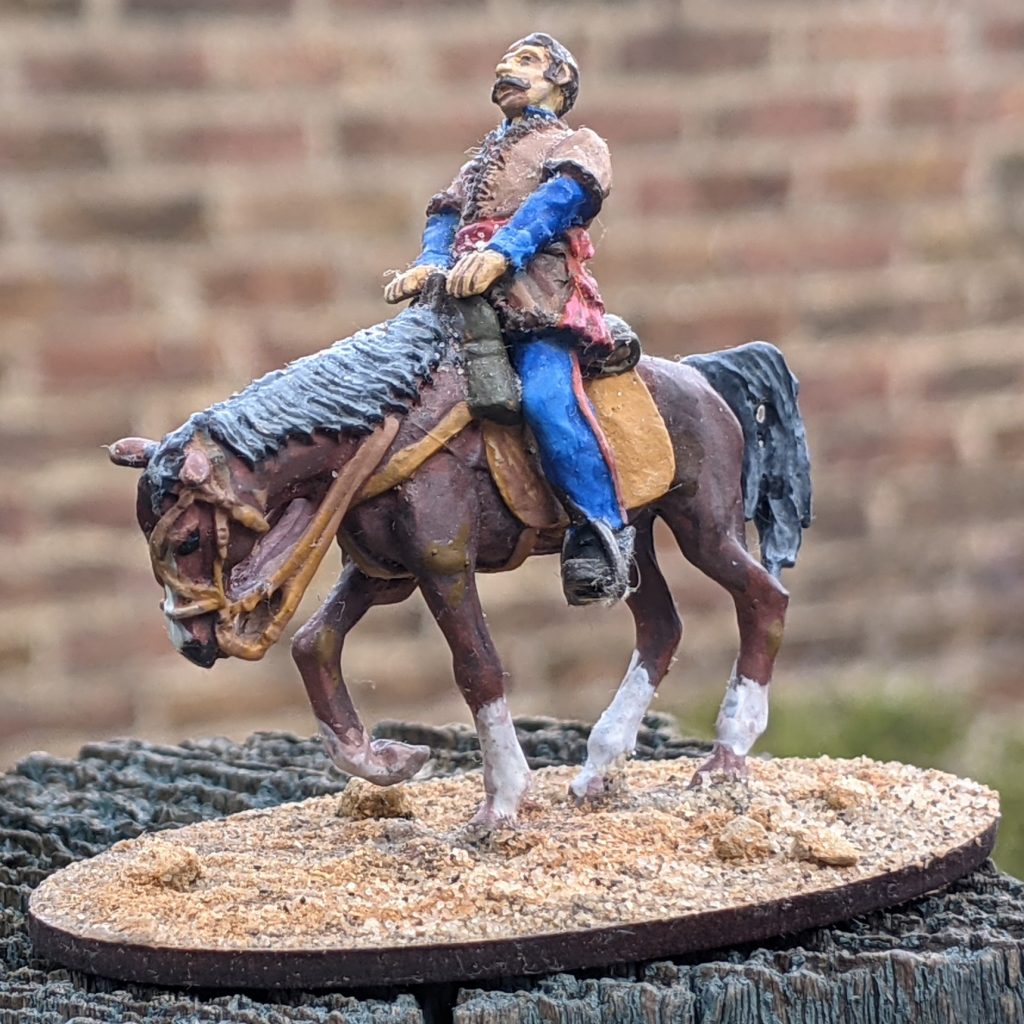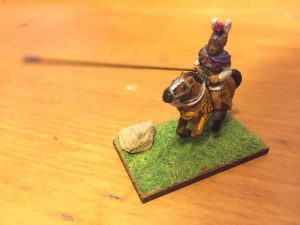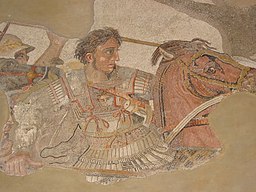The Airfix (now Dapol) plastic kit for a village church is a true classic of OO scale model railways, and is based on the real Old St Boniface church at Bonchurch near Ventnor on the Isle of Wight.
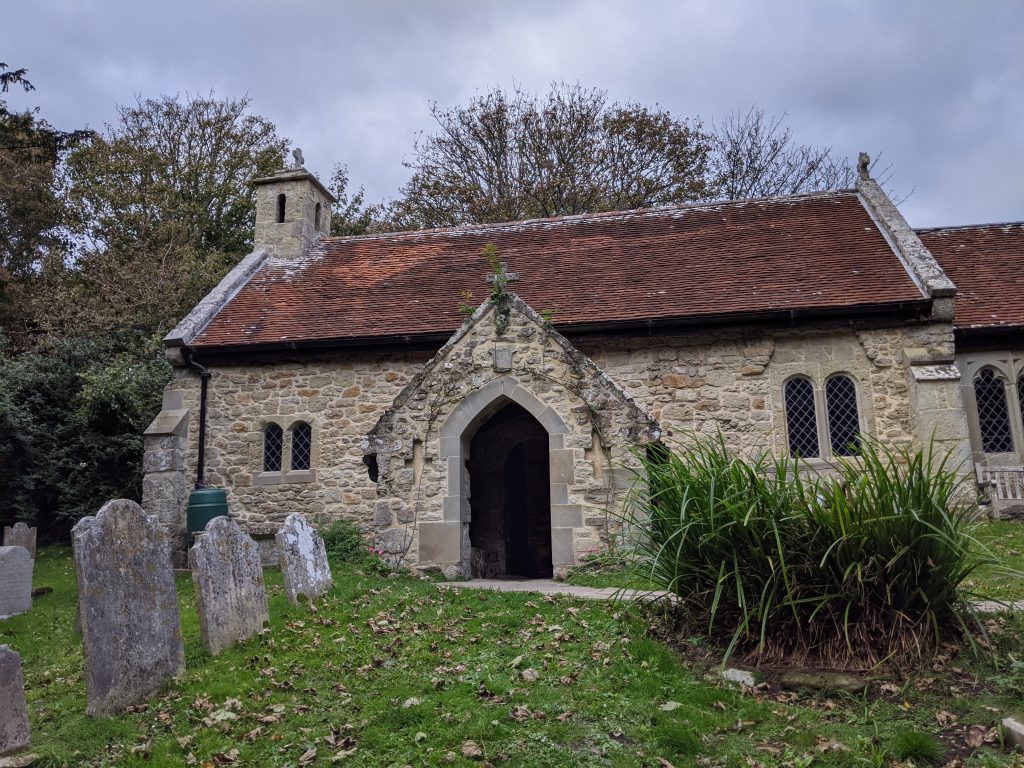
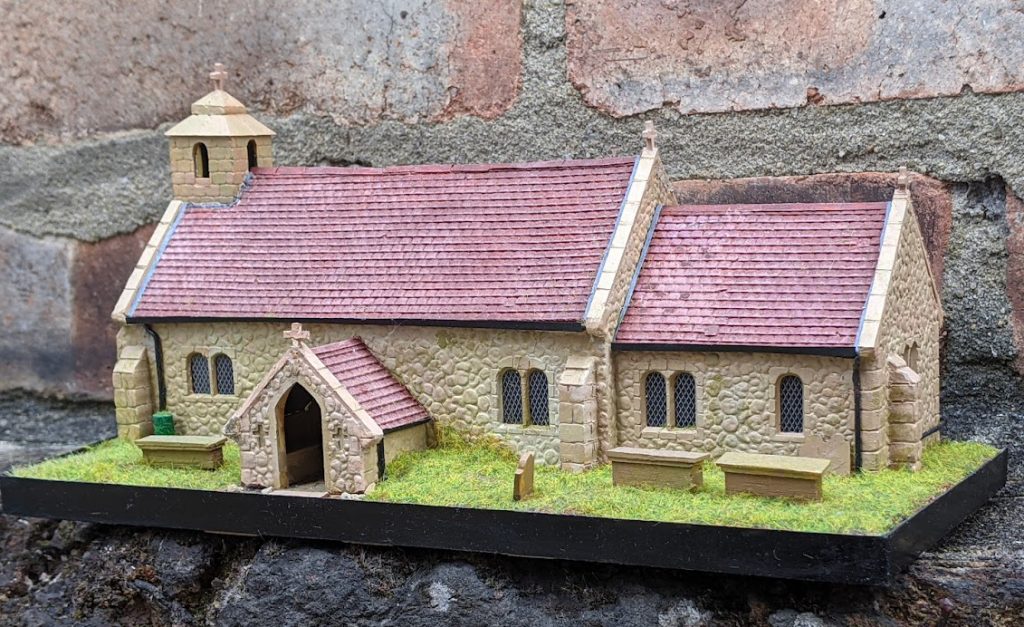
On 10 October 2020 I went to see the real thing, and then bought a Dapol kit to see what details could be added to make the model more closely match the prototype.
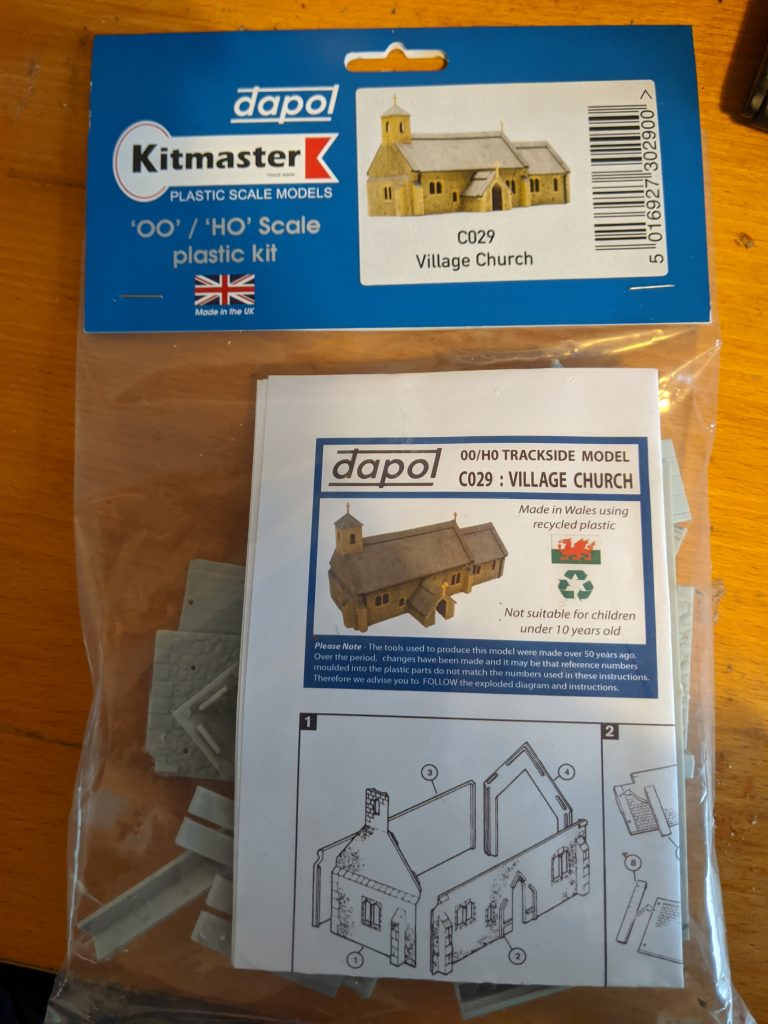
Old English churches tend to be quite complicated structures with centuries of accumulated modifications and additions, and the kit captures this well with details such as the small window by the porch.
The prototype is a very small church, as churches go, which helps for a model; a more conventionally sized church could easily dominate a typical model railway layout.
The main differences between the plastic kit and the real thing are the tower, which seems somewhat oversized and simplified on the model, and the roof.
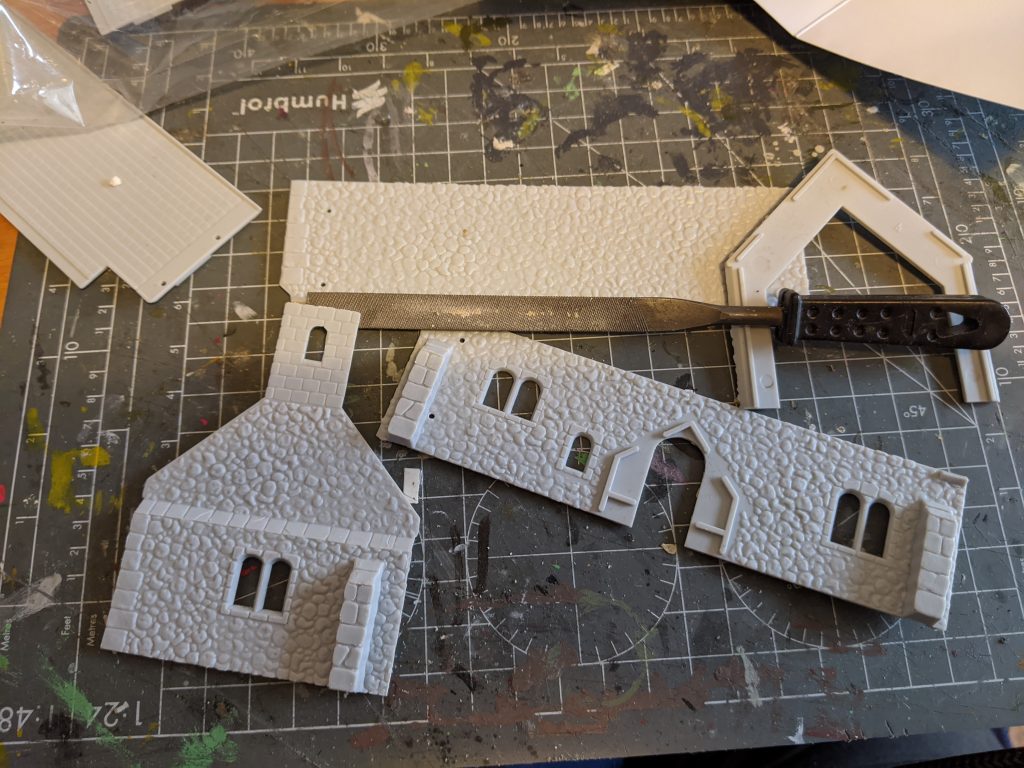
The first thing I noticed was just how well designed the kit is. Despite being a pretty ancient kit first released in the late 1950s, it goes together well.
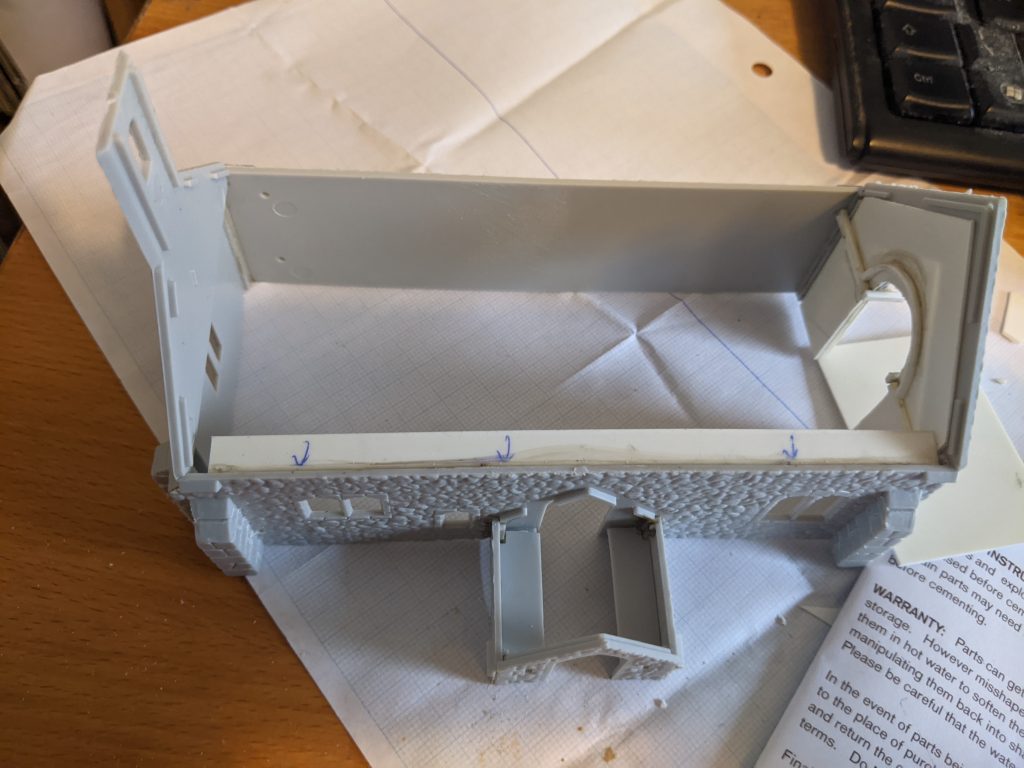
I added some internal bracing from plastic sheet to keep everything squareish.
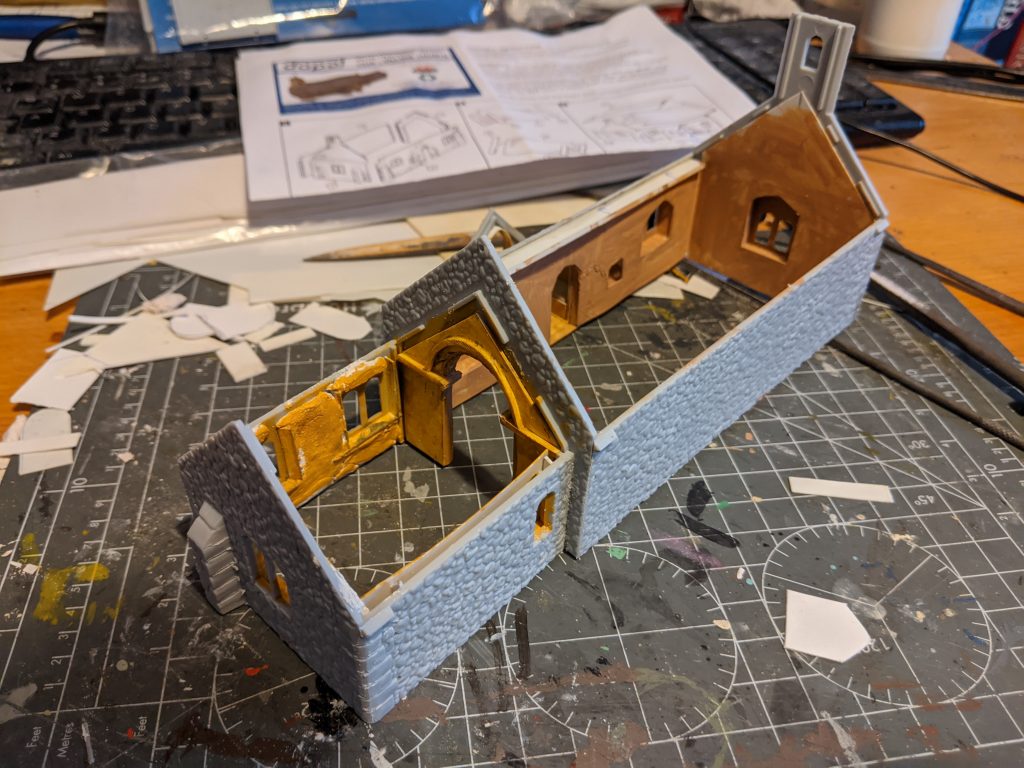
The buttresses need stonework scribing into their plain sides, and I also used plastic card to thicken up the walls around the porch and door so that they look like solid stone rather than thin plastic; it’s a small change but makes quite a big difference in appearance.
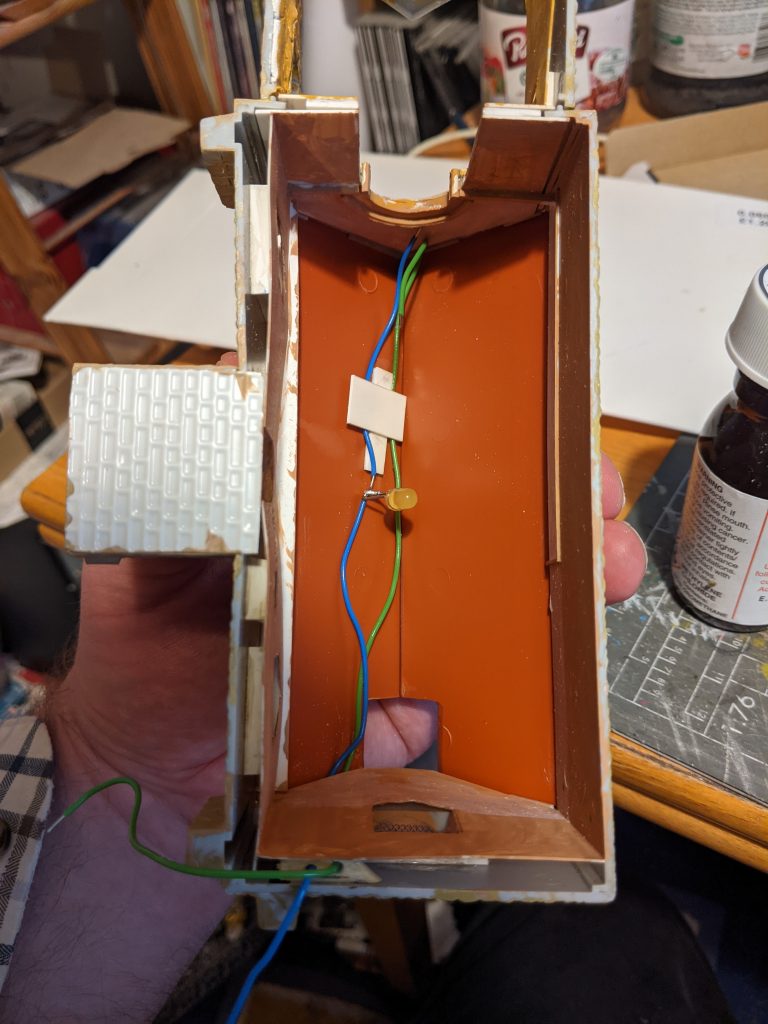
The walls of the real church are very thick. I started to install false walls to create some depth around the windows, but then decided this wasn a bit pointless as the interior can’t be seen.
The windows were glazed using clear plastic sheet with a pattern of diamond bars printed on it; I ordered this online from a modelling materials company, and it was well worth the slight extra cost.
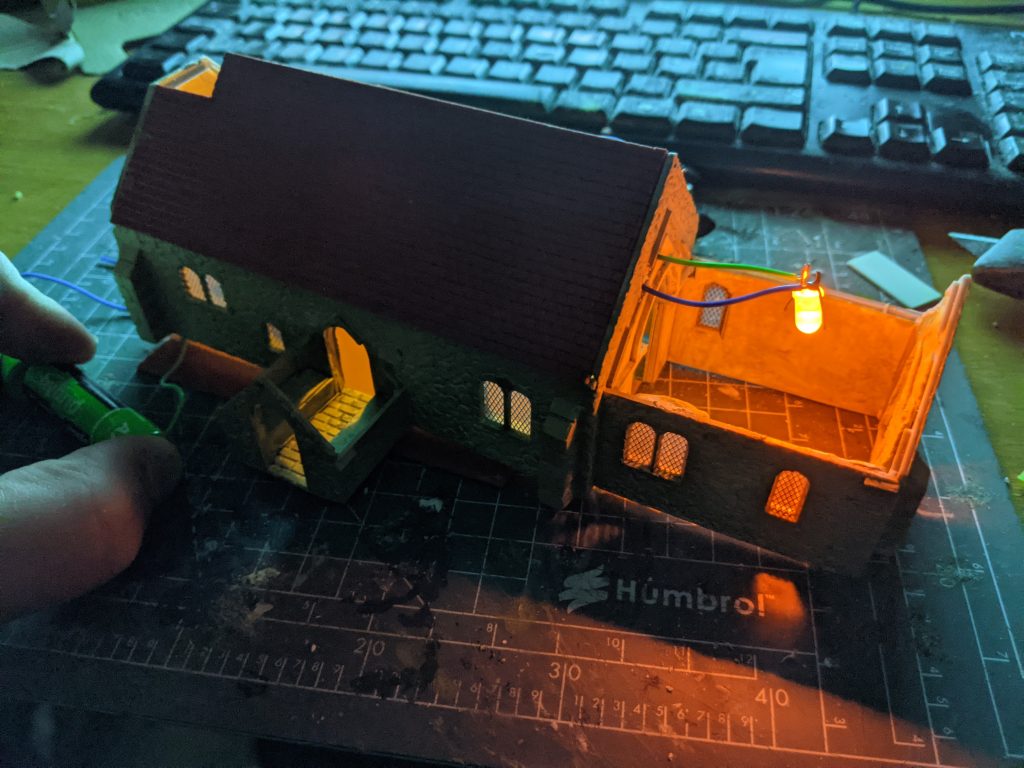
I abandoned plans to install some interior details after realising they would be pretty much invisible, even with LED lighting.
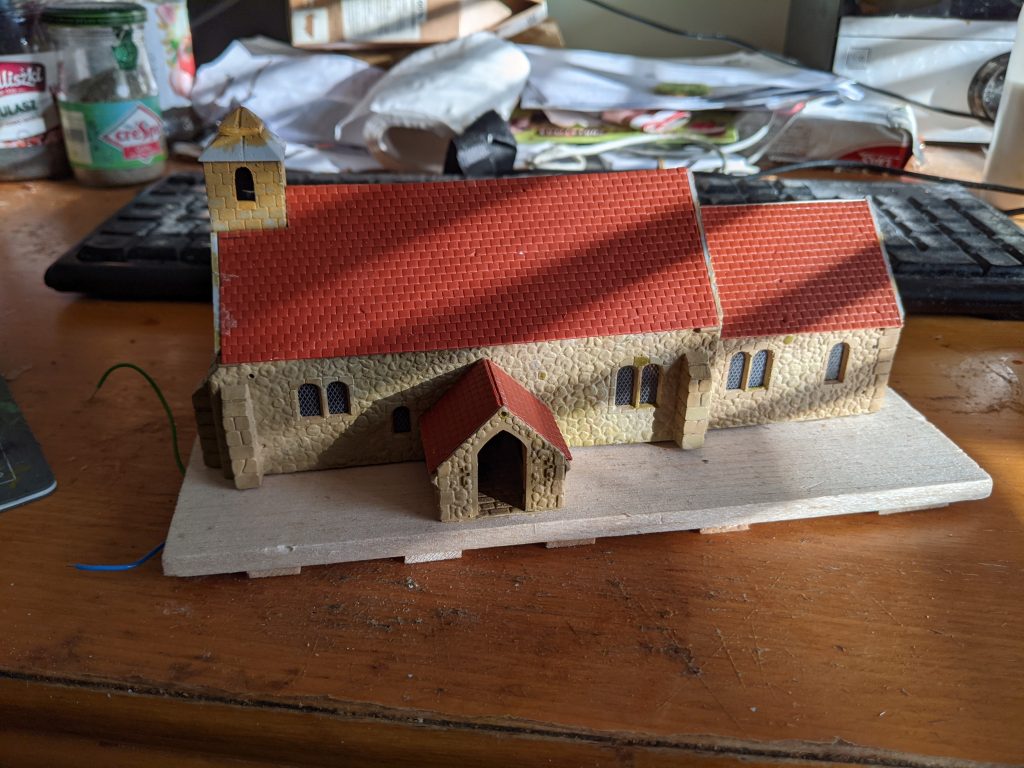
The roof is the aspect of the kit which most benefits from being replaced, as the moulding is a bit soft and the coping stones at the end and the ridge tiles on top are somewhat different to reality.
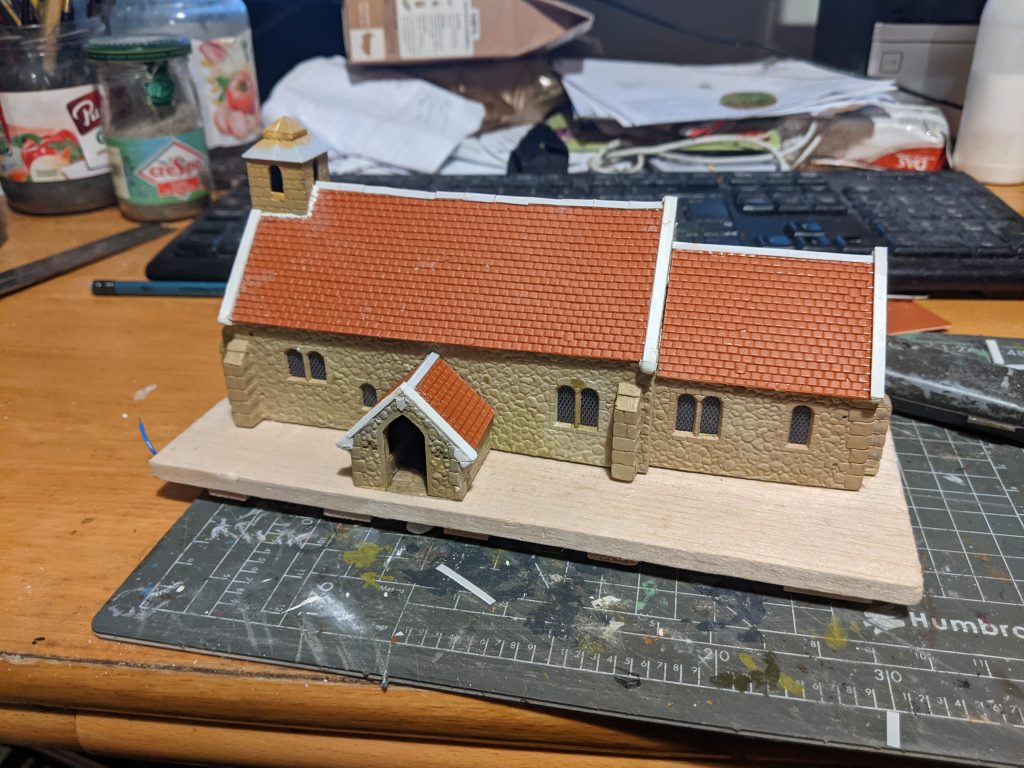
Fortunately, a Wills plastic sheet fits perfectly to length above the nave, with a pack of four sheets providing plenty of material to do the chancel and porch as well. The coping stones can then be replaced with something more to scale, which makes a huge difference to the appearance of the model.
If you only change one thing, make it the roof!
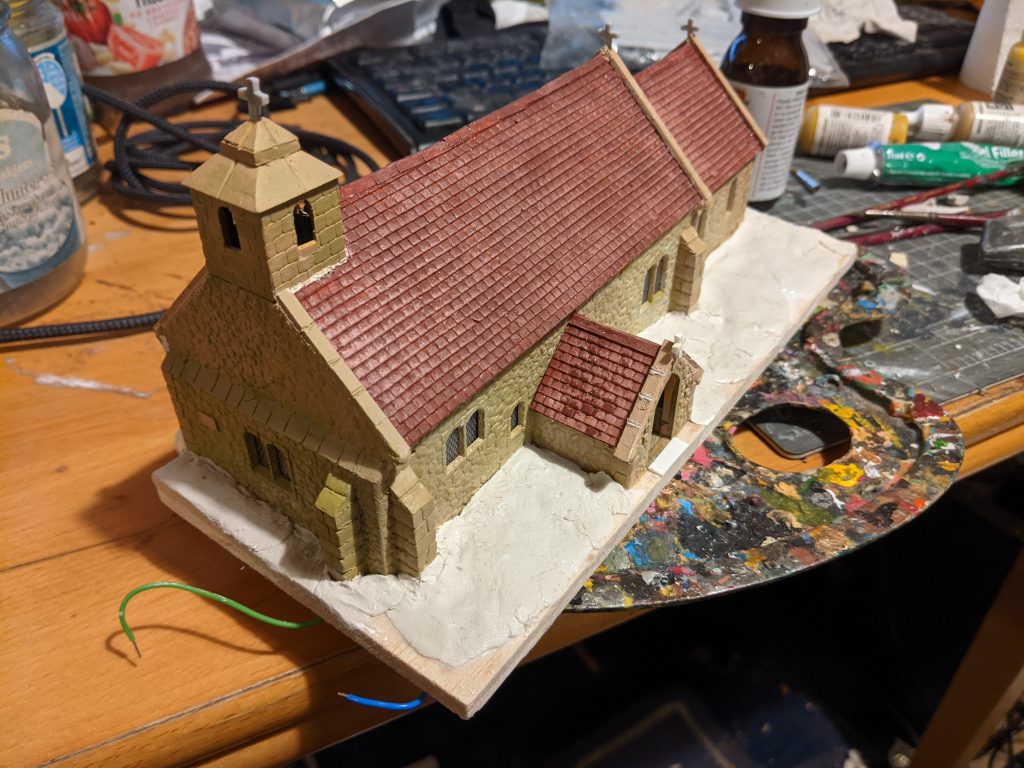
I cut down the tower a bit, and modified the pyramidal cap. While the kit has crosses to go on the tower, nave and porch, one is also needed for the chancel. I used the cross from the porch on the chancel, and made a new one for the porch.
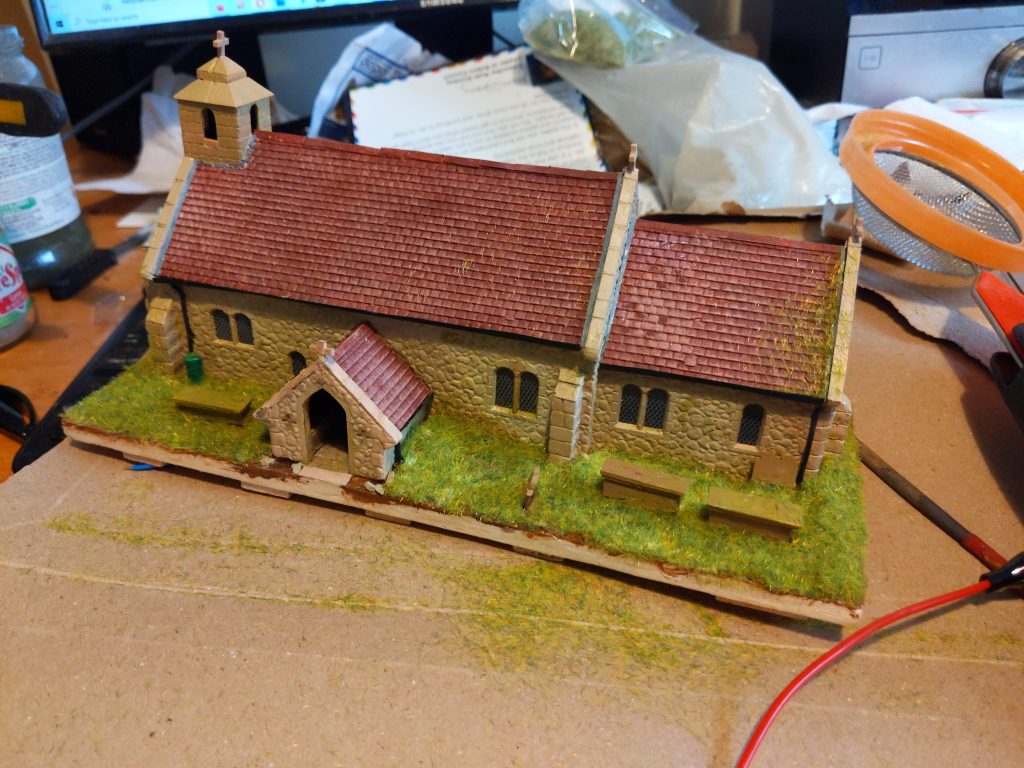
Gutters are from black card, and the downpipes in the kit were replaced with thick wire.
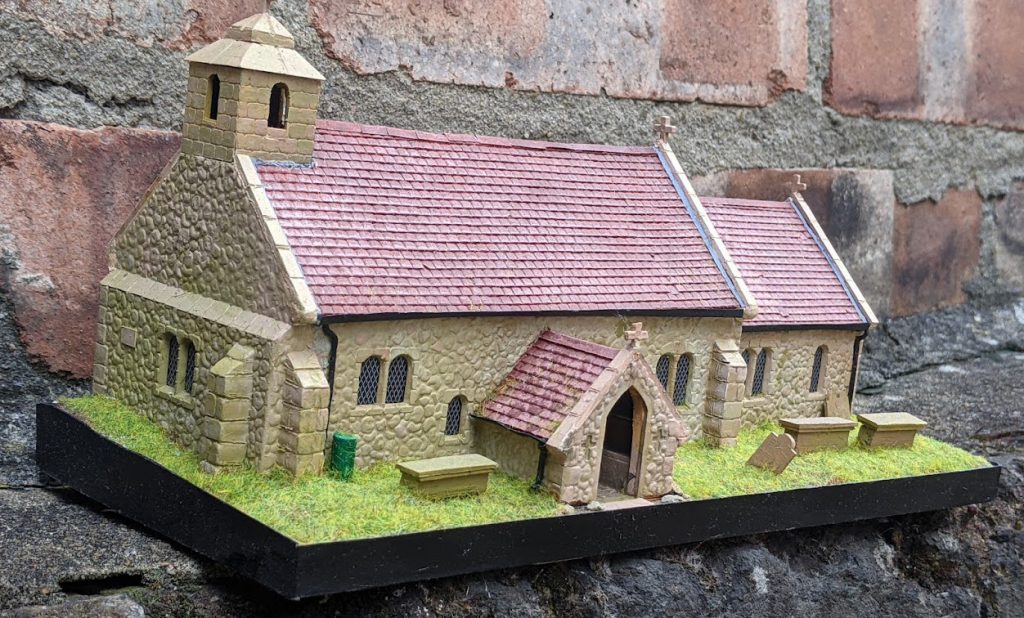
I added the little plaque on the west end wall.
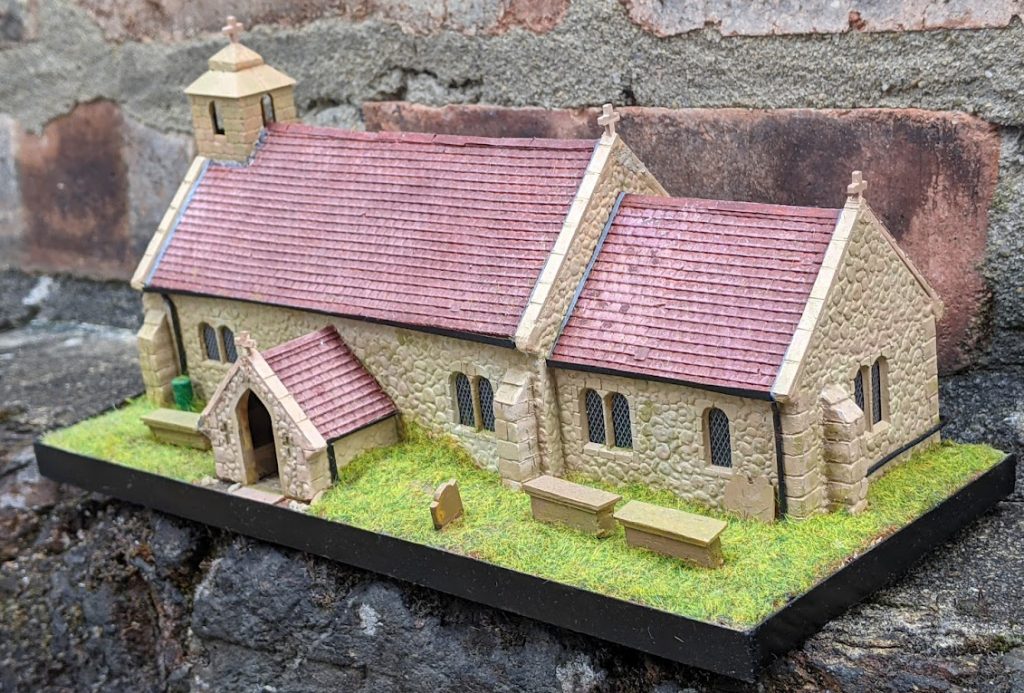
The gravestones are knocked up from balsa wood and plastic sheet.
Links
See also
